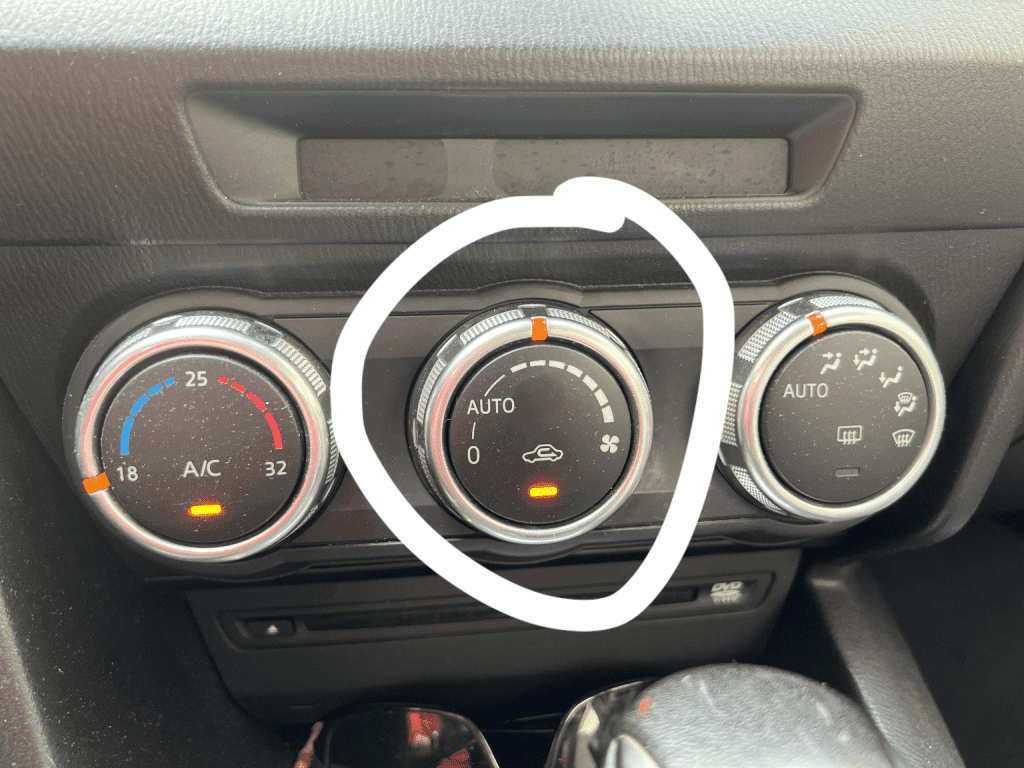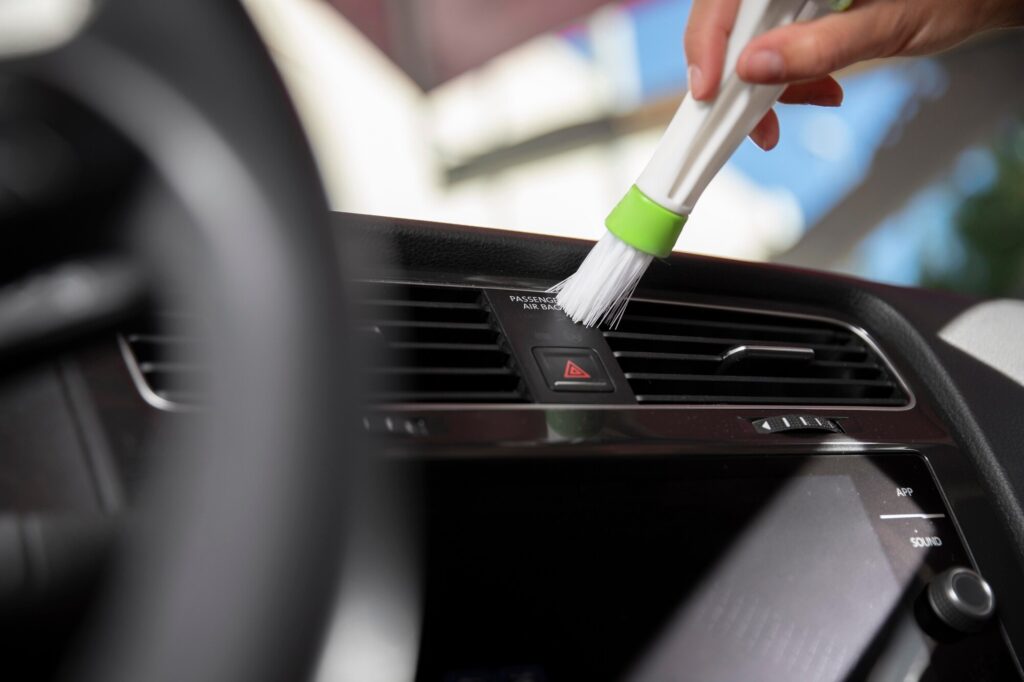In the ever-evolving world of automotive technology, there are countless buttons and symbols on a car’s dashboard, each designed to perform a specific function. Among these is the often-overlooked air recirculation button—a small, unassuming feature that holds the key to a more comfortable and efficient driving experience.

The air recirculation button is a feature found in most modern vehicles, typically represented by a car icon with a curved arrow inside. Its primary function is to recirculate the air already inside the vehicle’s cabin rather than pulling in fresh air from outside. When activated, the system closes off the outside air intake and reuses the air within the cabin, continuously cycling it through the air conditioning system.
The Science Behind Air Recirculation
When you press the air recirculation button, the vehicle’s ventilation system switches from drawing in outside air to reusing the air already inside the cabin. This process is highly efficient, particularly when the air conditioning is running, as it reduces the amount of energy required to maintain a comfortable temperature. The system typically uses sensors to monitor air quality and temperature, ensuring that the recirculated air remains fresh and comfortable for occupants.
By limiting the intake of outside air, the air recirculation mode can significantly reduce the amount of dust, pollen, and other airborne pollutants that enter the vehicle. This is especially beneficial for those who suffer from allergies or are driving in areas with poor air quality. The recirculation mode acts as a shield, protecting passengers from harmful contaminants and ensuring that the air inside the car is as clean as possible.
The Benefits of Using the Air Recirculation Button
Enhanced Fuel Efficiency
One of the most significant advantages of using the air recirculation button is its positive impact on fuel efficiency. When the air conditioning system doesn’t have to cool the hot air from outside, it uses less energy. This reduced load on the system not only saves fuel but also helps to prolong the life of the air conditioning components, leading to lower maintenance costs over time.
Improved Cabin Comfort
The air recirculation button is particularly useful in extreme weather conditions. In hot weather, it allows the air conditioning system to cool the cabin more quickly, providing relief from the heat. In contrast, during cold weather, it helps to retain the warmth inside the vehicle, reducing the need for the heater to work overtime.

Source: Freepik
Protection from External Pollutants
Driving through polluted areas, such as cities with heavy traffic or industrial zones, can expose you to a wide range of harmful pollutants. By activating the air recirculation mode, you can prevent these contaminants from entering the cabin, creating a safer and more comfortable environment for you and your passengers.
Noise Reduction

Source: Freepik
Another often-overlooked benefit of the air recirculation mode is its ability to reduce external noise. By closing off the outside air intake, the system helps to block out the sounds of traffic, construction, and other sources of noise pollution, resulting in a quieter, more peaceful ride.
When to Use the Air Recirculation Button
Hot Weather Driving

Source: Freepik
In hot weather, especially during summer, the air recirculation button is your best friend. It allows the air conditioning system to cool the cabin air more efficiently, providing quicker relief from the heat. This is particularly useful when you first enter a hot car and need to cool it down as quickly as possible.
Driving in Polluted Areas

Source: Freepik
If you’re driving through an area with poor air quality, such as a busy city or near industrial facilities, using the air recirculation mode can help protect you from harmful pollutants. This is especially important for those with respiratory issues or allergies, as it helps to maintain a cleaner cabin environment.
Avoiding Unpleasant Odors

Source: Freepik
The air recirculation button is also effective at keeping unpleasant odors out of the cabin. Whether you’re driving past a landfill, a farm, or any other source of strong smells, activating the recirculation mode can prevent these odors from entering the vehicle, allowing you to continue your journey in comfort.
When to Avoid Using the Air Recirculation Button
In Cold Weather

Source: Freepik
While the air recirculation button has many benefits, there are times when it’s better to avoid using it. In cold weather, for example, using the recirculation mode for extended periods can cause moisture to build up inside the cabin, leading to foggy windows. To prevent this, it’s best to switch to fresh air mode occasionally, allowing outside air to circulate and reduce humidity levels.
During Long Drives

Source: Freepik
Using the air recirculation mode for extended periods can cause carbon dioxide levels to build up inside the vehicle, leading to drowsiness and discomfort. On long drives, it’s essential to switch to fresh air mode periodically to ensure that the cabin air remains fresh and oxygen levels stay optimal.
For Passengers with Respiratory Issues

Source: Freepik
While the air recirculation mode can help protect against external pollutants, it’s not always the best choice for passengers with respiratory issues. In some cases, the recirculated air can become stale, exacerbating respiratory symptoms. If you or your passengers have respiratory concerns, it’s often better to use fresh air mode to ensure a steady supply of clean, oxygen-rich air.
Optimizing the Use of the Air Recirculation Button
Combining with Other Climate Controls
To get the most out of the air recirculation button, it’s important to use it in conjunction with other climate controls in your vehicle. For example, adjusting the fan speed, temperature, and vent settings can help you achieve the perfect balance of comfort and efficiency. Experimenting with different combinations will allow you to find the settings that work best for your specific driving conditions.
Using Sensors and Automation
Many modern vehicles come equipped with sensors and automated systems that can optimize the use of the air recirculation mode. These systems can detect changes in air quality, temperature, and humidity, automatically switching between recirculated and fresh air modes as needed. Familiarizing yourself with these features and learning how to use them effectively can enhance your driving experience and improve cabin comfort.
Maintaining Your Vehicle’s HVAC System
Regular maintenance of your vehicle’s heating, ventilation, and air conditioning (HVAC) system is essential for ensuring that the air recirculation mode works effectively. This includes replacing air filters, checking for leaks, and servicing the air conditioning system as needed. By keeping your HVAC system in top condition, you can maximize the benefits of the air recirculation mode and enjoy a cleaner, more comfortable ride.
The air recirculation button may be small, but its impact on your driving experience is anything but. From improving fuel efficiency and cabin comfort to protecting against pollutants and reducing noise, this often-overlooked feature is a powerful tool for modern drivers. By understanding when and how to use the air recirculation mode effectively, you can enhance your driving experience and ensure that your vehicle’s interior remains a safe, comfortable haven, no matter where the road takes you.


